Matt de Prez explores if there are cheaper, quicker and clearner alternatives to trunking with the help of industry experts.
Road haulage is an essential part of our economy. It is responsible for around 90% of all surface transport in the UK.
However, running a fleet of trucks is becoming ever more challenging as operators battle with rising congestion, clean air directives, stricter compliance and driver shortages.
Yet expectations continue to rise. Consumers want more goods, more quickly.
The rail freight sector could hold the key to alleviating some of these pressures. Taking trucks off the road would improve air pollution and reduce road congestion, but moving goods by rail instead of by truck is not straightforward.
While it is feasible to move more goods on the rail network, it is inevitable that they will need to be transported on the road network at some point to reach their final destination.
Using more than one mode to transport goods is by no means a new concept. Anything that comes from outside the UK, for example, will travel by air, on water or by rail.
For long distance shipping or moving goods between ports, it is often much cheaper and faster to send freight by rail, sea or air than by using roads.
Around 10% of domestic shipping is carried out using the rail network and over the past six years, rail freight in the UK is estimated to have saved two million tonnes of pollutants, by removing 31.5 million HGV journeys and saving almost four billion HGV miles.
Freightliner is one of the UK’s largest rail freight operators. It moves around 750,000 containers by rail each year, handling shipments from all over the globe.
It uses a network of rail heads and terminals to get goods across the country in the most efficient way.
To complement this service it also runs one of the biggest road fleets in the UK to move freight to its final destination.
Cost is a high priority
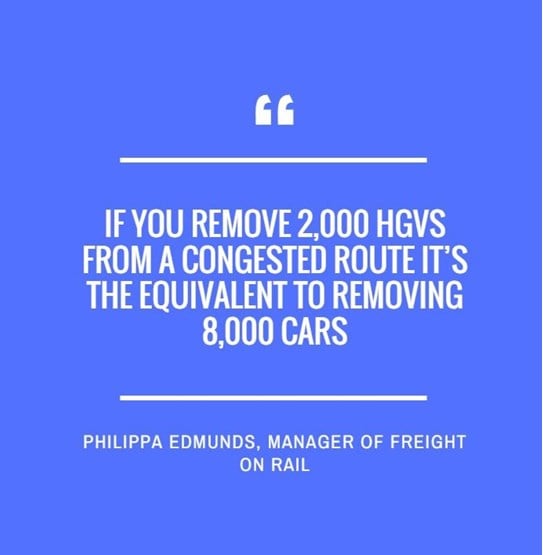
Joanne Turner, commercial director at Freightliner, says: “Customers will choose a mode for a number of different reasons. Usually cost is a high priority but so, too, is service level, capacity and the environment.
“There is more that can be done by rail, but you have to consider the capacity of the ports and what can be achieved on the network, which is shared with passengers.
"Unfortunately, freight takes a secondary position to the passenger network.”
In some cases, rail freight can be cheaper, faster, more reliable and more sustainable than road haulage.
The average freight train can carry the same load as 76 HGVs meaning operating costs are much lower and CO2 emissions for a shipment are reduced by 76%.
Freight on Rail is a leading campaigner for the growth of rail freight.
It is a partnership between the rail trade unions, the rail freight industry and Campaign for Better Transport – which works to promote the economic, social and environmental benefits of rail freight.
In partnership with the Department for Transport, Freight on Rail looked at the congestion on key corridors such as the A14, A34, M6 and M62 to see if rail could reduce congestion by removing up to 2,000 HGVs off those routes per day.
“If you remove 2,000 HGVs from a congested route it’s the equivalent to removing 8,000 cars,” says Philippa Edmunds, manager of Freight on Rail.
“Our study showed there would be significant benefits for road congestion and a significant air pollution reduction.
“For each of those corridors, if you took that traffic off the road, you could reduce NOx emissions by 10%, particulates by 7% and CO2, nationally, by 2%.”
But moving those truck shipments to rail may have significant impacts for the customer.
Biggest challenge for rail
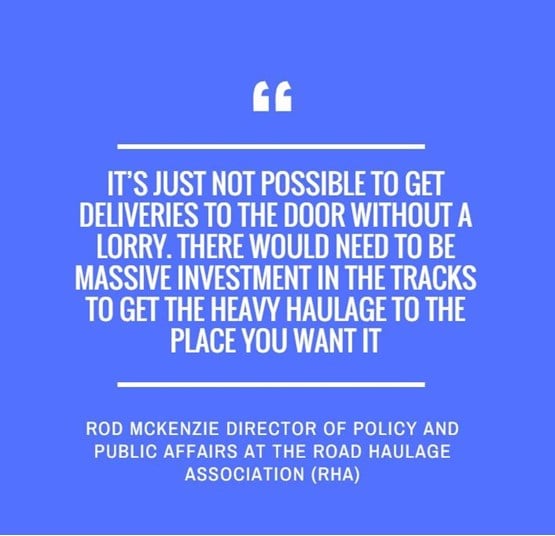
The biggest challenge for the rail network is coverage, or the lack of it. While roads link almost every destination in the UK, rail is only beneficial to those close to the tracks.
“The truth is the railways are not built for door-to-door haulage of heavy goods. That is why 90% of everything we get in Britain comes on the back of a lorry,” says Rod McKenzie, director of policy and public affairs at the Road Haulage Association (RHA).
“It’s just not possible to get deliveries to the door without a lorry. There would need to be massive investment in the tracks to get the heavy haulage to the place you want it.”
Chris MacRae, Freight Transport Association (FTA) head of rail freight policy, says: “What rail is very good at is moving big, unitised loads. There are obviously economies of scale and environmental benefits. What rail isn’t so good at is smaller, wagon-type shipments. Road haulage undercuts it.
“You can put one container on a shared train, but the days of wagonload rail freight are nearly over. Road is far better suited to it than railways.”
He explains that if you’ve got a regular flow of containers going from point A to point B and want to take space on a train, you can do that. However, if you have less than a full container load, then it becomes a challenge.
Maggie Simpson, executive director of the Rail Freight Group, says: “Train operators run differently to truck operators. Some trains are fully sold to a single customer. Other services are sold on a cost-per-unit basis.
“Some of the rail freight companies will sell spare spaces on trains. It is not quite as sophisticated at is on the road network in terms of minimising empty running, but operators are trying to get trains as full as they can.”
A new project, backed by Innovate UK, aims to tackle the problem. Called FreightShareLab, it is targeting transport inefficiencies, not only from empty runs but also partial loads.
Project partners Route Monkey, Transport Systems Catapult, Heriot Watt and DVV Media are developing an open data software platform to act as a strategic planning tool, integrating job and vehicle data from shippers, fleets and carriers.
“This is more than just single fleet freight optimisation or freight exchange,” says Sarah Bee, project director at Route Monkey. “If you think of the concept of mobility as a service, this is freight as a service.”
Sharing rules and arrangements
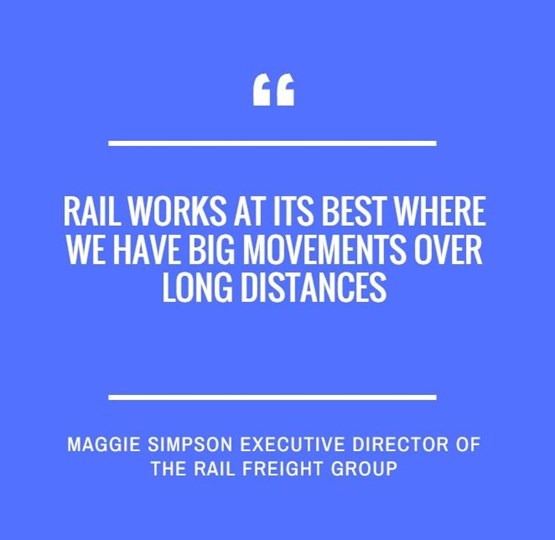
The project’s goal is to develop a platform which understands each fleet’s sharing rules and arrangements. An optimisation algorithm will take all those details and work out how those fleets can collaborate.
“The output of the platform will provide a route for each fleet and the fleet manager can accept or reject it. Very much like when planning today,” explains Bee.
Currently, rail freight excels in two areas: container shipments and construction materials.
A quarter of all shipping containers are moved by rail and around 40% of aggregate transported into London is carried on the railways.
“Wherever we work, it’s complementary to road,” says Simpson. “Rail works at its best where we have big movements over long distances. Anything less than 100 miles is difficult to make an economic case for.”
One part of the haulage industry that is changing is the location of warehouses. These are making rail more attractive to retailers, with major supermarkets quickly becoming some of the largest users of domestic rail freight.
New warehouse facilities
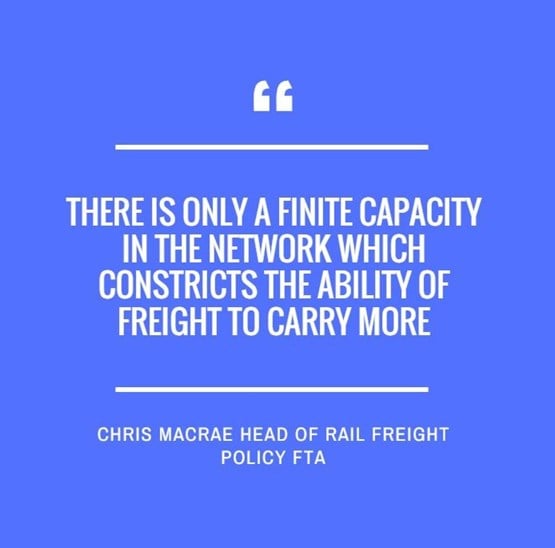
Strong rail links also boost the value of industrial developments and a number of new facilities are being built, which have better access to major rail lines as well as roads.
“The more you can link warehousing to rail head the easier it is for people to use rail,” adds Simpson.
“There is a demand for warehouse space that isn’t going away. If you build units with a range of transport options you are future-proofing.”
Birmingham is a good example of a location which would appear to be too near to the southern ports to make sense, but is actually a very popular rail destination.
While trucks can compete on price, rail has the capacity advantage. Freightliner has between 12 and 13 trains per day heading to the Midlands.
“It’s not because we are cheaper, there just aren’t enough vehicles to service that area,” explains Turner.
“If you look at the rail routes in the UK, it’s difficult to link key areas that have at least 100 miles between them.”
A Hull to Manchester link has long been under consideration, but there isn’t enough traffic in both directions to support it, something crucial for a profitable rail operation.
“If you were to map out the traffic in each area you could start to form links. There isn’t a strong domestic network yet but I think it’s something a lot of operators would be interested in,” adds Turner.
As the rail industry is privatised, much of the investment in new sites needs to come from either the haulage firms or from companies willing to invest in rail-friendly locations.
A new 700-acre site at Kegworth, Leicestershire, will be the latest to join the network. It will form the East Midlands Gateway close to junction 24 on the M1, near the airport.
The largest rail freight terminals are at the country’s major ports, such as Southampton and Felixstowe.
At the latter, rail traffic has grown to 33 in- and out-bound trains per day.
Network Rail, which owns and operates the rail infrastructure in the UK, predicts rail freight will grow 30% in the next decade, adding an extra 240 trains per day.
MacRae says: “There will be growth in rail, there has been growth – although not as much as people expected. Rail has great potential; it’s just about being realistic about what that potential is.
“There is a lack of large, sustained investment. The Government doesn’t specify freight when it talks about rail investment.
"What it does do is specify passenger franchises. It needs to decide what it wants in terms of passengers vs freight. There is only a finite capacity in the network which constricts the ability of freight to carry more.”
Additional capacity
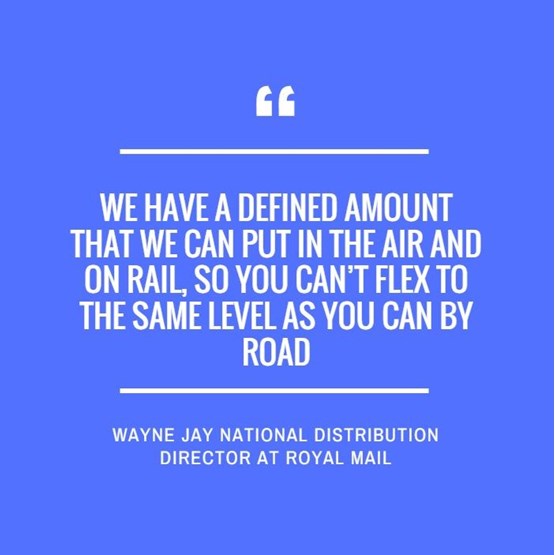
Simpson believes additional capacity is feasible and there will be incremental growth, although she points out that some areas are at full capacity and require more investment.
“We are all struggling with capacity,” she says.
“Over the medium- to long-term we will have to re-emphasise how transport is used. Lots of freight will need to run overnight, but, currently, that affects engineering works.”
In the next five years, the freight industry is set to grow across all modes.
Simpson believes it would be a “real stretch” for rail freight to increase its share of the market to 20% in that time.
Turner says: “The concept is feasible. It’s a question of whether you can get enough volume from one point in the UK to another with both points near the rail network.
“It’s a challenge to make the financial costs work for shorter distances because rail has high fixed costs. You’d need to make at least two runs a day, with the same set of assets, to make the costs stack up.
“If you are moving goods by train from Felixstowe to rail-linked premises, rail is often cost-effective. But as soon as you need to add a road leg you are adding at least £150 which is where it is difficult for rail to compete.”
McKenzie says: “British businesses try to do things as efficiently as they can and a number of factors will play, but price is absolutely key. Best price will trump everything else, including practicality. If you don’t have a rail head where you need one, companies will go for a road option.
“Companies have to make their businesses work. This usually entails opting for the best price during a very difficult time for the country.”
Royal Mail uses rail as a key part of its logistics network, running trains daily to complement its road, air and sea operation.
Wayne Jay, national distribution director at Royal Mail, says: “We will continue to use the combination of road and rail. Our integrated network is very disciplined in terms of moving to time. When you cover the UK like we do with a universal service that integration is vital.
“At some points, customer demand will drive the need to use more trucks, air or rail. Most organisations will flex to react appropriately in the peak periods.”
But Jay warns that flexing up or down on rail isn’t as straightforward as it sounds: “We have a defined amount that we can put in the air and on rail, so you can’t flex to the same level as you can by road.”
He adds that while all modes are equally necessary to the operation, everything ultimately ends up in a truck or van.
Realistic expectations
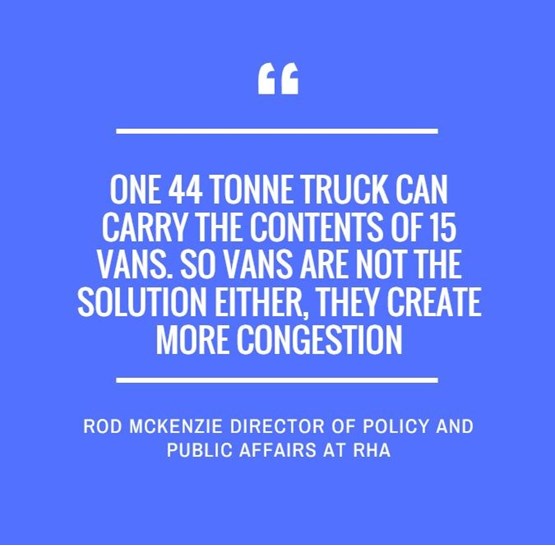
MacRae believes it is important to be realistic about what percentage of road freight can be converted to rail.
“We all want to make the supply chain efficient. I think a certain proportion can shift to rail, but there is a lot that could never come off road,” he says.
There are Mode Shift Grants available for businesses where sending freight by rail may be slightly more expensive than road but has a greater environmental benefit.
Turner fears rail just doesn’t have the capacity to take on a significant amount of extra work yet.
Freightliner has an extensive rail and terminal network but she says it is already getting close to capacity.
“There are not many operators who have invested in terminals and developed them over time. Where the development will come from is the important question.”
Bottlenecks in the rail network also cause congestion for trains, while freight operators have to slot into tightly run schedules leaving no room for flexibility.
MacRae explains: “The train leaves when it leaves, if you can’t get your goods on board in time then you miss it.”
Equally, the rail industry has its own driver shortage.
Locomotive drivers aren’t easy to come by and the training is intensive. The age profile of train drivers is high, too, and those that are qualified are often tempted by passenger train jobs which pay more than freight.
McKenzie adds: “In my view, rail freight and road freight exist alongside each other and interact pretty well. However, for the last mile you need a lorry.
“You might ask: why a lorry and not vans? Simple. One 44 tonne truck can carry the contents of 15 vans. So vans are not the solution either, they create more congestion.”
As investment in rail grows and the network expands, there are clearly some areas where rail will be able to take more share of the haulage industry.
At the same time, truck operators have little to fear as there will always be a need for trucks at some point in the cycle.
It’s likely that the transition will occur at the larger end of the market as the businesses already involved in rail expand into it further.



















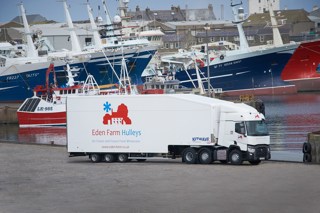
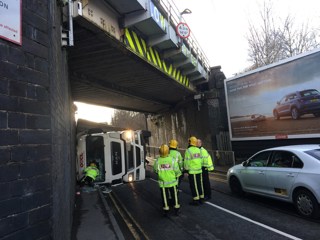

Login to comment
Comments
No comments have been made yet.